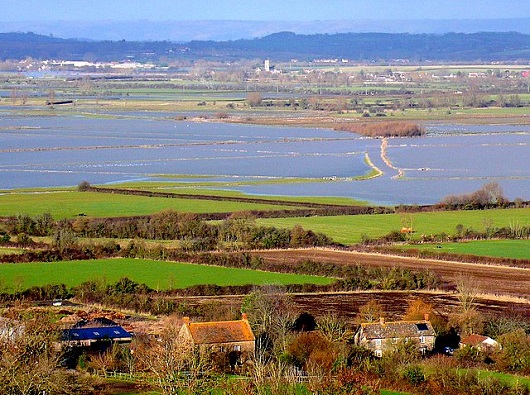Lessons learnt in US help tackle global flooding

New methods that could help measure trends in flooding have been developed by scientists at the University of St Andrews.
The researchers say the development, which quantifies flood frequency, can contribute to flood management systems and help estimate insurance costs more accurately.
With flood risks set to grow as climate change accelerates, the St Andrews’ earth scientists say that their work – published online today by Geophysical Research Letters – is especially relevant to the UK.
The new research, led by Dr Louise Slater during her PhD studies in the Department of Earth & Environmental Sciences at the University of St Andrews, examined and analysed both streamflow and channel capacity in rivers across the USA.
Until now, alterations in the frequency of floods have been thought to be influenced primarily by climatic changes in the volumes of streamflow flowing in rivers and over floodplains.
Dr Slater said, “In assessing and analysing flood risk, channel capacity in streams and rivers has generally been assumed to remain relatively constant over set periods of time. We now know that trends in flood hazard are not just about hydrology. Compared to previous studies, we took a new approach and examined 401 rivers throughout the USA to compare the contributions of channel capacity and flow frequency to historical flood hazard and analyse their interactions.
“Our findings are especially relevant to the UK, given the recent controversy surrounding the causes of flooding in the Somerset Levels.”
Increases in flood damage in recent decades are a global problem, impacting the environment and resulting in significant economic losses, often with devastating consequences felt by people, communities and businesses in the affected areas.
In the USA alone, direct flood losses from 1980 to 2010 are estimated to have averaged $7.8 billion annually, with the National Flood Insurance Program recommending that insurance premiums should be increased to reflect the true flood risk.
Dr Slater was supported in her research by co-authors Dr Michael Singer of the Department of Earth & Environmental Sciences at the University of St Andrews, and Professor James Kirchner of the Department of Environmental Sciences, ETH Zurich.
Dr Singer continued, “Flooding is a major hazard to lives, infrastructure and economic prosperity, but trends in flood hazard are currently poorly understood. By developing new methods to assess flood frequency, we have demonstrated that accurately quantifying changes requires the separate accounting of both streamflow and channel capacity.”
ENDS
Notes to editors
Dr Slater’s PhD studies at the University of St Andrews were funded by the Natural Environment Research Council.
The co-authors are available for interview:
- Louise Slater (University of St Andrews) – now at Queen Mary University of London, School of Geography, tel: 02078 822748. Email: [email protected]
- Dr Michael Singer (University of St Andrews) –. Department of Earth & Environmental Sciences tel: 01334 462874. Email: [email protected]
- Prof James Kirchner (ETH Zurich) – Department of Environmental Sciences. Email: [email protected]
The article is available via open access:
http://onlinelibrary.wiley.com/doi/10.1002/2014GL062482/abstract
Issued by the University of St Andrews Communications Office.
Images and illustrations available on request, on 01334 467230 – [email protected]
Category Research